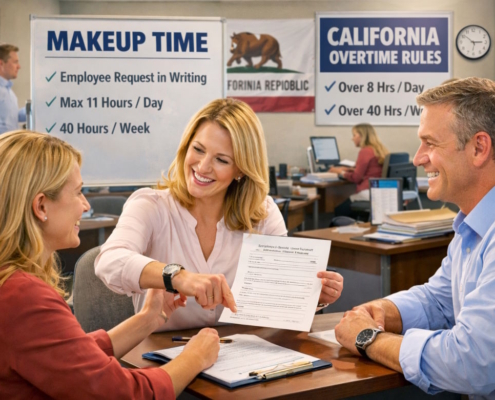Tools for HR Analytics
1. R
R is the go-to software for HR analytics. R is an excellent tool for exploring large data sets, as well as for statistical analysis and visualization. You can use it to clean and analyze data sets that contain millions of rows of information. You can also use it to see how your data and results look visually.
In the realm of R, RStudio stands head and shoulders above the competition as the ubiquitous IDE. Integrated development environments (IDEs) offer supplementary tools for programmers and data analysts. This improves the software’s usability.
In a nutshell, RStudio is an improved version of R that accomplishes all the same things. The RStudio interface has a code editor, the R console, a workspace that is conveniently located, a history log, and space for files and graphs.
To reiterate, one of R’s main selling points is its ability to handle significantly bigger datasets than, say, Excel. In addition, the R package system provides access to a vast library.
You can conduct almost any statistical analysis and make stunning visualizations with these tools, and they’re easy to install. As an illustration, consider the caret package. In order to train algorithms using cross-validation, this program lets you separate data into training and testing groups.
The ggplot package is another example of a R tool for making graphs. Using ggplot, Lyndon previously shown the distribution of staff turnover for a large Canadian corporation in an article on R Churn analytics.
2. Python
Python, another computer language, is functionally equivalent to R. A lot of people in the data science community are wondering which one will end up becoming the data scientist’s go-to tool.
R is more appropriate for visualizations, has a more active statistics community, and is better at executing statistical analysis. While Python is easy to learn, it offers slightly fewer features.
Popular integrated development environments (IDEs) include Spyder and PyCharm. These modules serve as Python’s equivalent of R’s RStudio. They are both integrated development environments (IDEs) that data scientists can use to learn Python. A data science tool, Spyder stands for Scientific Python Development Editor. It comes with a full set of development tools, including visualization choices, an interactive console, a viewer for documentation, and an advanced editor.
Python is a great choice if you have prior expertise with it or if you want to start learning it fast. Make R your go-to language if you expect to spend the next five years crunching numbers.
3. Microsoft Excel
We must not overlook the fundamentals when discussing HR analytics technologies.
First, the majority of us have used Excel. A comma-separated value (CSV) file is the most common format for data extracted manually from human resources systems. You can open and modify these files with ease using Excel.
One great thing about Excel is how easy it is to use. Most of us HR data nerds are already familiar with its intuitive design.
Transforming a dataset into a table and checking the data range of each column for outliers is a quick way to assess the cleanliness of your data, for instance.
By navigating to the age column, you can easily see the youngest and oldest individuals. No one under the age of 16 or older than 80 would be considered an appropriate employee for your organization. These extreme cases can be located at the touch of a button.
Using Excel for HR analytics? Here are a few pointers:
- Excel users who wish to perform more complex analyses should get the Analysis ToolPak. With this bundle, you may perform complex analytics like linear regression and correlation.
- Make use of Tables whenever you’re dealing with big files. Structured data in a table allows Excel to function considerably more effectively.
- When working with large datasets, avoid using Excel formulas. Convert the result of a column calculation in Excel to a numerical value. Any modification to the dataset causes the formulas to recalculate. This clogs Excel and puts undue strain on your computer’s RAM and processing power.
- You can easily check the gender of a categorical variable (Male, Female) in a table. Find any discrepancies or mistakes by selecting the table column.
- The “VLOOKUP” function is a lifesaver when merging data sets. It simplifies the process of merging two independent data sets.
- Summarizing massive amounts of data is a breeze with pivot tables. You can actually execute HR analytics in Excel with pivot tables and the VLOOKUP tool.
4. Power BI
Microsoft dominates the business intelligence market, according to Gartner’s Magic Quadrant. We included Microsoft’s Power BI for that reason. It simplifies data aggregation, visualization, and analysis.
It is easy to integrate several source systems with Power BI, such as SQL databases containing people data, a real-time Twitter feed, or APIs for machine learning. Power BI then integrates all these various data sources. By following this straightforward aggregation technique, you may merge numerous data sources into a single, massive database that is well-suited for research and reporting.
After that, you may utilize the combined data to make a pivot table (using Power Pivot). This gives you a quick look at some important parts of your staff. After that, you can use Power BI’s dashboarding capabilities to turn that same data into a visual representation.
5. Tableau
When it comes to aggregating and visualizing data from many sources, Tableau is quite similar to Power BI. Established in 2003 as a business platform for Stanford University research, the software has become a dominant force in the visualization industry.
In terms of visualizing data, Tableau is among the top business intelligence (BI) tools currently available. From 2012 through 2019, it was named to the Gartner Magic Quadrant seven years in a row.
The higher price tag of Tableau in comparison to its rival Power BI is one of its drawbacks.
6. Visier
When it comes to workforce-related inquiries, Visier is the go-to data aggregation service. It integrates with several HR systems and brings them all together into a single HR BI solution.
Visier markets itself more as a platform for practical insights into people analytics in comparison to Tableau, with the goal of revealing trends in workforce data. It also helps you figure out what factors influence productivity and performance, among other HR outcomes.
When it comes to people analytics, Visier has a solution that is almost perfect. It has features that forecast internal transfers, promotions, and exits using algorithms, among other things.
7. Qlik
Qlik is data aggregation software, much like Visier. Qlik is a more generic data aggregation solution with significant dashboarding capacity, in contrast to Visier’s focus on actionable insights on labor data. This makes Qlik an excellent choice for warehousing, dashboarding, and general data gathering.
Qlik, together with Power BI and Tableau, has had a prominent position in the Gartner Magic Quadrant for an extended period of time.
8. SPSS
Power BI, Qlik, and Tableau are more commonly used for data aggregation, while SPSS is more commonly used for data analysis.
In the field of social sciences, SPSS is among the most used HR analytics tools. Its intuitive design makes data analysis possible even for those without a background in statistics. Those working in human resources who have an interest in data analysis are likely familiar with SPSS due to its widespread usage in the social sciences.
This is also why we chose SPSS over SAS, its main rival, rather than SAS itself. Outside of the realm of social science, SAS has a larger user base. The learning curve with SAS is greater, though. SPSS is also very comparable to Excel, which makes it much easier to use.
For businesses without fully developed analytical skills, SPSS is a good starting point. Exploratory correlation analysis and rapid regression analysis are both made easy with SPSS. R is more suited for algorithms that involve more complex machine learning techniques.
9. CPLEX Optimizer
Optimisation requires a separate suite of analytics tools. Prescriptive analytics frequently makes use of these. The primary goal of prescriptive analysis is to identify the optimal action to take in every particular circumstance. Despite their usefulness, prescriptive analytics are still in their infancy. Having said that, companies stand to gain a lot from these prescriptive tools.
The CPLEX Optimizer is one such tool. With CPLEX Optimizer, you can narrow down your options to the most optimal choices from billions of potential business moves. It achieves this by offering data modeling that is both versatile and highly efficient.
Some may find this overly theoretical. Pretend you own a chain of retail outlets and storage facilities. How can you make the most efficient use of your existing warehouses to supply these stores? In addition, is it wise to establish a second warehouse at a predetermined site? With CPLEX, you may simulate these difficulties, receive advice on whether to establish a second warehouse, and find out how far away it should be from your current stores to be most effective. Workforce planning and scheduling are two further examples of applications.
Advice on Choosing an Effective HR Analytics Platform
Now that you’re familiar with the options, it’s time to pick the best tool for your analytics work. Utilizing a combination of tools might be beneficial when conducting analytics. Because of this, you will need different tools when you want to combine and examine huge amounts of data than when you want to show the results on a dashboard.
Having a clear goal in mind will help you choose the best HR analytics software. Would you like to…..
…master your data and build out your human resources dashboards? Consider using a program such as Qlik, Tableau, or Power BI. With these instruments, data visualization and data aggregation are child’s play.
…discover some fundamental facts from your business and personnel data, including if there are notable differences in departmental performance or engagement? Avoid complicated programs and instead use Excel or SPSS. They can provide you with important data insights with minimal analytical expertise. Although Visier provides more extensive analytical capabilities, it is not ideal for doing quick, on-the-fly analyses due to its more time-consuming setup process.
…conduct in-depth analyses of HR data and draw conclusions? Use R or Python, two data analysis tools. With their help, you may manage massive amounts of data while doing the most cutting-edge analysis currently available. Analysis of job classifications and the prediction of staff turnover are two such instances. Another option is CPLEX Optimizer. Thanks to its more prescriptive nature, this tool guides you to optimal judgments by analyzing current data and taking your decision guidelines into account.































